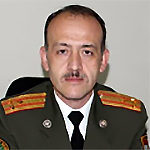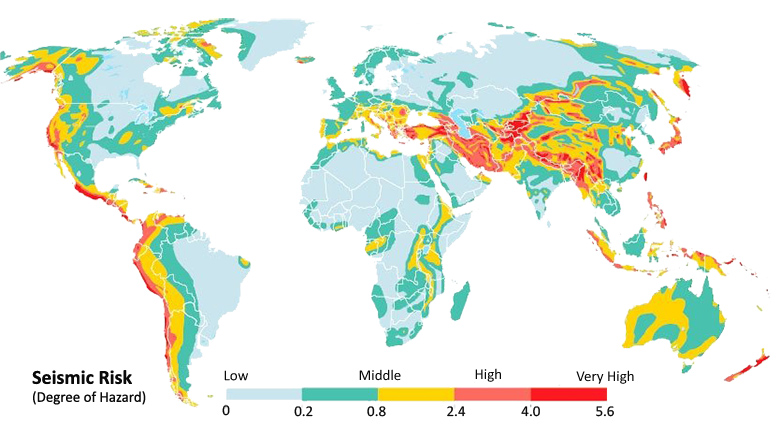 Ясусуке Тцукагоши
Ясусуке Тцукагоши
специальный представитель, Япония, Группа Всемирного банка
Mr. Yasusuke Tsukagoshi became Special Representative, Japan on August 1, 2013. The Special Representative leads the institutional relationship with the Japanese Government, partners, and stakeholders; oversees the World Bank Tokyo Office; and has responsibility for coordinating and managing outreach and communications programs in Japan. Mr. Tsukagoshi, a Japanese national, has had a long career in Japan’s Ministry of Finance (MOF). Most recently, he served as Director General of Tokyo Customs following senior positions in the Ministry’s Customs and Tariff Bureau. Prior to the Customs’ positions, he had 17 years of experience in international finance and development. From 2008 to 2011 Mr. Tsukagoshi was Executive Director at the Inter-American Development Bank, representing Croatia, Japan, Korea, Portugal, Slovenia, and the United Kingdom, and from 1988 to 1991 he served as Executive Director at the African Development Bank, representing Argentina, Austria, Brazil, Japan, and Saudi Arabia.
 Ко Такеучи
Ко Такеучи
Специалист по управлению рисками стихийных бедствий, Европа и Центральная Азия, Глобальная практика по социальным, городским, сельским вопросам и устойчивости, Всемирного банка
Mr. Ko Takeuchi is a Disaster Risk Management Specialist for the Europe and Central Asia region at the World Bank. He is currently leading disaster risk management projects in Armenia, Bosnia and Herzegovina, Kyrgyz Republic, Tajikistan, and Uzbekistan. Prior to joining the World Bank in 2013, he worked on a city resilience program at UN-Habitat. He also has experience working as a Japan International Cooperation Agency (JICA) Expert and international consultant for several years on issues related to urban development and disaster risk management in Bangladesh, Pakistan, Liberia, and Solomon Islands. His expertise are in urban and regional planning incorporating disaster risk reduction, land use planning, and economic analysis for urban development projects. He holds a master’s degree from University of British Columbia on urban and regional planning.
 Ованнес Хангельдян
Ованнес Хангельдян
начальник Центра кризисного управления, Министерство чрезвычайных ситуаций, Республика Армения
Mr. Hovhannes Khangeldyan is Head of Crisis Management Center, Rescue Service, Ministry of Emergency Situations, Republic of Armenia since 2015. His work experience started from 2000 as Senior Officer of the Operative Department under Emergency Management Administration of the Government of the Republic of Armenia, and promoted to Head of Staff of Civil Protection Regiment in 2001. During 2002-2007, he served as Deputy Head of the Crisis Management Center, Operation Management Department under the Emergency Management Administration. From 2007-2011, he held the position of the Deputy Head of Operation Management Department, Armenian Rescue Service, Ministry of Emergency Situations, and became the Head of the department in 2011 where he served till 2014. Since 2015, Mr. Khangledyan has been the Head of the National Crisis Management Center, the Armenian Rescue Service, Ministry of Emergency Situations. Mr. Khangeldyan holds a Master’s Degree from National University of Architecture and Construction of Armenia, majoring in Freeway Construction and Engineering.
 Азамат Мамбетов
Азамат Мамбетов
заместитель начальника антикризисного центра, Министерство чрезвычайных ситуаций, Кыргызская Республика
Mr. Azamat Mambetov is Colonel, and Deputy Director of the Crisis Management Center at the Kyrgyz Ministry of Emergency Situations. He took an active part in liquidation of armed gangs in the south of the Kyrgyz Republic in 1999. He carried out a UN peace keeping mission in the Syrian Arab Republic in 2012. He was rewarded with a medal for faultless service, medal for military-civil cooperation, medal for excellent military service and Manas military medal for combat skills. His expertise includes civil defense, disaster risk reduction, and land use planning. He holds a Ph.D. in Disaster Management from the Civil Defense Academy of the Russian Ministry of Emergency Situations.
 Мухамаджон Салимзода
Мухамаджон Салимзода
заместитель председателя Комитета по чрезвычайным ситуациям, Республика Таджикистан
Mr. Salimzoda is Deputy Chairman of the Committee of Emergency Situations and Civil Defense, Republic of Tajikistan. He has an extensive professional experience in the area of Emergency Situations and Civil Defense. He started his carrier as an accountant of the Republican training courses, Committee of the Emergency Situations and Civil Defense in 1995. After working as a senior lecturer of the above courses, he was appointed as Deputy Head in 1999. In 2003, he took the role of the Acting Officer, Planning Department, the Operational Management of the Ministry of Emergency Situations and Civil Defense. From 2003 to 2007, he served as Head of the Population, Training, and Education, Department of the General Staff, Ministry of Emergency Situations and Civil Defense. Then, he worked as Head of the Department of Readiness and Training, the Population and Accountability for Non-military Formations, the Civil Defense of the General Staff, Ministry of Emergency Situations and Civil Defense till 2008. Between 2005 and 2015 he was also served as Chief, Staff for Emergency Situations and Civil Defense in the city of Dushanbe, capital of Tajikistan. Mr. Salimzoda holds a higher education’s degree from the Tajik Agrarian University, specializing in Economics and Management. He also holds a graduate degree Civil Defense Academy of the Ministry of Civil Defense and Emergency Situations of the Russian Federation, with specialization of Command, Staffing, and Operational and Tactical Training.
 Сецуко Сая
Сецуко Сая
директор, Отдел международного сотрудничества, Бюро ликвидации последствий стихийных бедствий, секретариат кабинета министров, Правительство Японии
Ms. Setsuko Saya is Director, International Cooperation Division, Disaster Management Bureau in the Cabinet Office of Japan since July 2016. She leads the national initiatives for disaster risk reduction in private sector through establishing Disaster Risk Reduction (DRR) Planning in communities, and Business Continuity Planning (BCP). She also leads the Japanese delegation for the implementation of Sendai Framework for DRR 2015. Prior to joining in the Cabinet Office, she was the Head of Division, Regional Policies for Sustainable Development, Public Governance and Territorial Development in the Organisation for Economic Co-operation and Development (OECD) in Paris 2012-2016, where she led the OECD programmes for economic and social analysis on sustainable development in cities on the theme of “Resilient Cities”, “Demographic Changes in Cities”, and “Risk Governance”. She also worked in Housing Bureau and City Bureau in the Ministry of Land, Infrastructure, Transport and Tourism in Japan, and was responsible for emergency response in housing provision after the Great East Japan Earthquake (2011). She has a BA in law from the University of Tokyo in 1989 and MBA from Haas School of Business, the University of California, Berkeley in 1998.
 Кейко Сакода Канеда
Кейко Сакода Канеда
Специалист по управлению рисками катастроф, Центр по управлению рисками стихийных бедствийв Токио, Глобальный фонд по снижению опасности стихийных бедствий и восстановлению (GFDRR), Всемирного банка
Ms. Keiko Sakoda Kaneda is a Disaster Risk Management (DRM) Specialist at the Global Facility for Disaster Reduction and Recovery (GFDRR) DRM Hub Tokyo. She works on technical assistance grant portfolio, and supports connecting Japanese relevant experience with the World Bank’s operational teams, beyond the traditional DRM community, for mainstreaming DRM in various sectors. She brings solid operational expertise in post-disaster/conflict reconstruction, disaster preparedness, climate change adaptation and urban development from nearly 10 years of experience. Her focused experience in post-disaster/conflict housing reconstruction added value to recent Bank operations in Nepal and Vanuatu after devastating disasters in 2015. Prior to joining the World Bank, she worked at UNDP and UN-Habitat in Indonesia, UNHCR in South Sudan and JICA in Mongolia. Ms. Kaneda holds a Master's degree in Architectural Engineering from Kyoto Institute of Technology, Japan. She is currently pursuing a Ph.D. in Architectural Engineering at Kyoto University.
❖ Oбзор
❖ Наша деятельность

 Ясусуке Тцукагоши
Ясусуке Тцукагоши Ко Такеучи
Ко Такеучи Ованнес Хангельдян
Ованнес Хангельдян Азамат Мамбетов
Азамат Мамбетов Мухамаджон Салимзода
Мухамаджон Салимзода Сецуко Сая
Сецуко Сая Кейко Сакода Канеда
Кейко Сакода Канеда